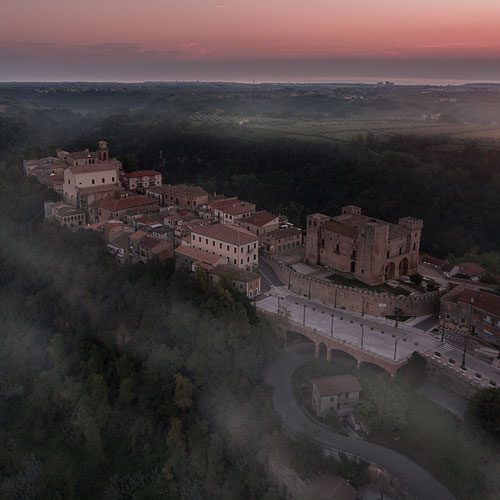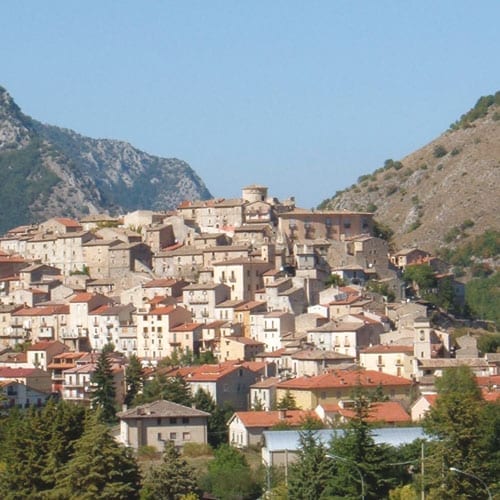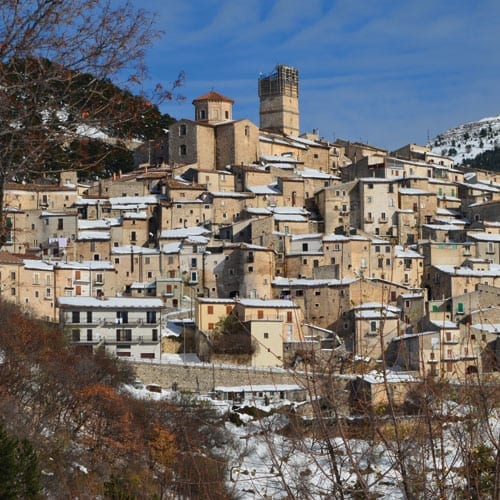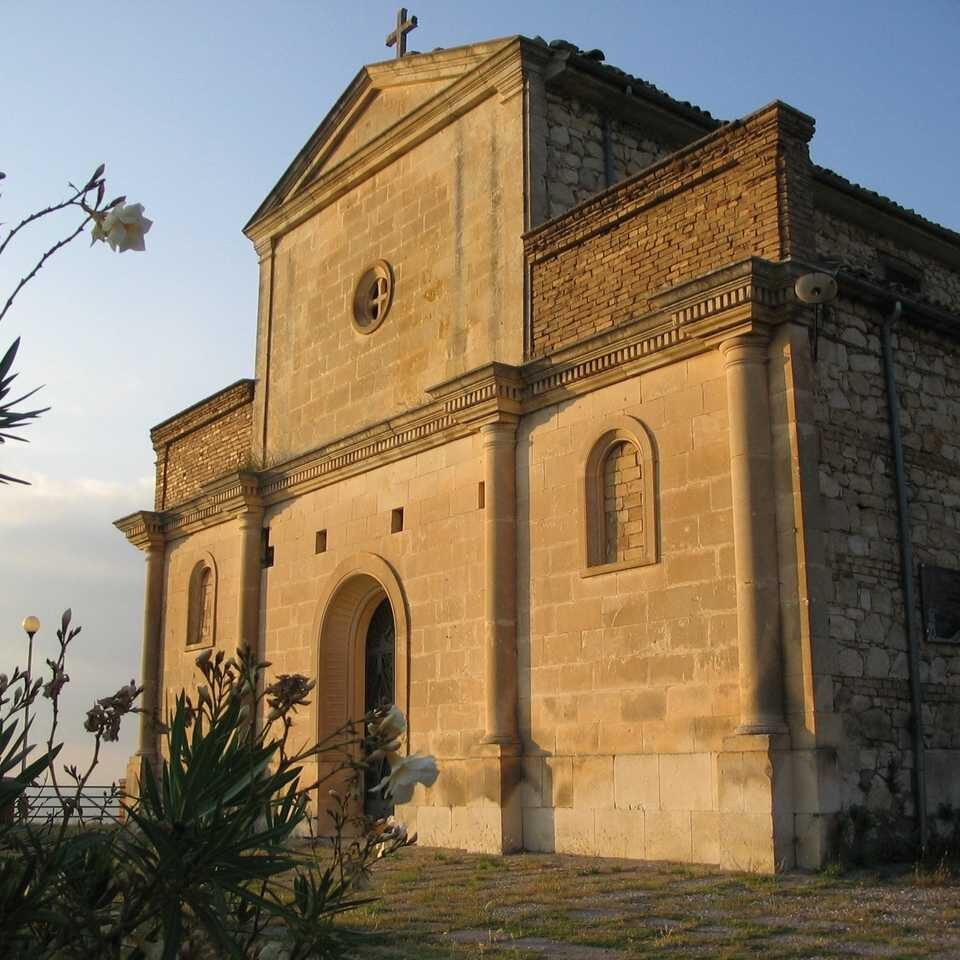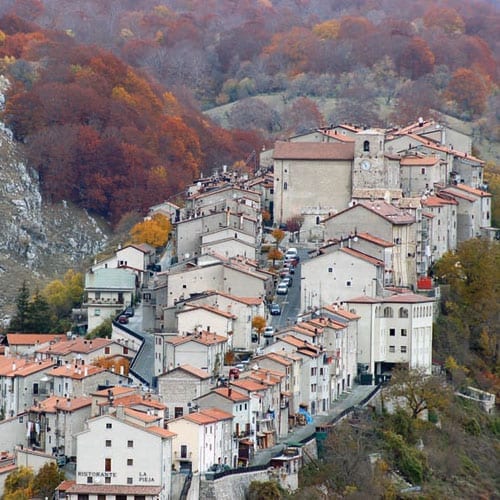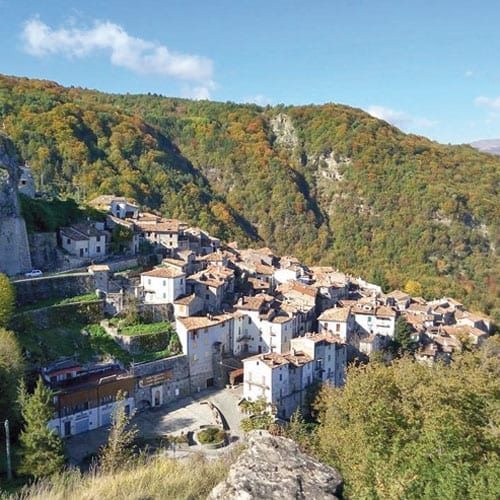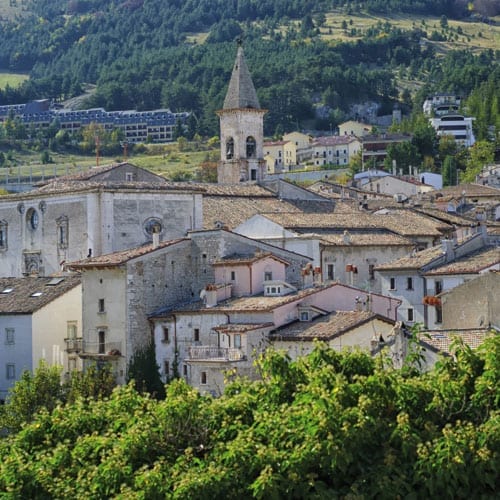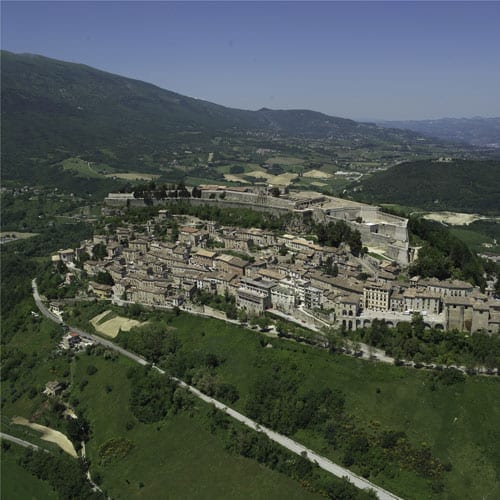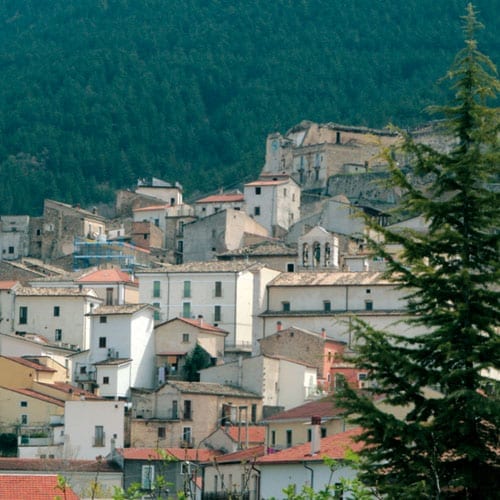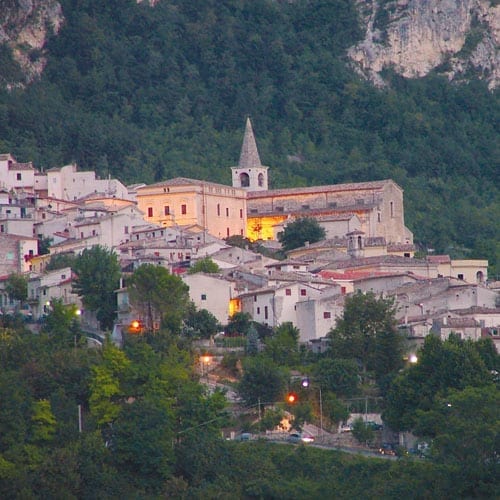 Campli
Campli
MUNICIPALITY OF Campli
(Province of Teramo)
Altitude
mt. 393 a.s.l.
POPULATION
7136
tourist information
Tourist office
Piazza Vittorio Emanuele II, no.4 – Ph. 0861/5601207
Facebook: www.facebook.com/ufficioturisticocampli
E-mail: turismo@comune.campli.te.it
The twins that surround and protect the plain of Campli are called Mount Girella and Mount Foltrone. For the locals, Montagna dei Fiori and Montagna di Campli. The rivers that mark the territory are the Siccagno and Fiumicino rivers. The Gran Sasso National Park, one of the largest in Italy with one of the richest biodiversity in Europe, stretches all around. Of ancient origin, Campli still shows its past greatness in its architectural structure . As proof of this, there are countless monuments and buildings capable of arousing amazement for their beauty and authenticity. Its narrow streets and walls are a great treasure chest full of history and art treasures.
 The Name
The Name
The ancient toponym Campulum appears for the first time in a document dated 1078 listing the possessions of a Roberto Conte d’Abruzzo.
The fulcrum of the city life is Piazza Vittorio Emanuele II, lined with the most imposing monuments: Palazzo del Parlamento (XIV) – one of the oldest civic buildings in Abruzzo, enlarged in the XVI century with a third floor where the first permanent theatre in Abruzzo was opened – and the Cathedral of Santa Maria in Platea, built above a small older church, now the Crypt (XII century).
In 1772 Campli obtained the privilege of building the Sanctuary of the Holy Staircase, one of the most interesting places of worship in Central Italy.
Palazzo del Parlamento, also called Palazzo Farnese, now the Town Hall, is the oldest civic building in Abruzzo, which dates back to the late thirteenth century, when Campli was governed by a small parliament. Hence the need for a civic palace that well represented, from an architectural point of view, the richness and power of the place. Among the attacks suffered by enemies and numerous seismic events, Palazzo Farnese over the years has undergone profound changes: the first in the sixteenth century, the last in the restoration in 1888. The prevailing style is Gothic; the façade is embellished by a seven-arched portico with round arches.
Campli, under the control of the Farnese, became a meeting place for artists from schools of masters such as Giotto and Raphael, as shown by the frescoes and paintings that embellish the cathedral of Santa Maria in Platea, built in 1395 on the remains of an ancient building. The 12th century crypt offers a magnificent cycle of Giotto school frescoes from the first half of the 14th century. The altars are also of great interest, including the Sacrament made of fine stone by Sebastiano da Como (1532). In the chapel of Sant’Andrea Apostolo there is a painting of the Madonna with Child and Saints by Giovan Battista Ragazzini (1557) and a copy of the Visitation: the original by Raphael is on display at the Prado Museum in Madrid. The sumptuous wooden ceiling painted by Donato Teodoro from Chieti dates back to the first half of the eighteenth century.
During the period when Campli was an Episcopal seat, on 21 January 1772, thanks to a Papal Privilege of Clement XIV, the Holy Staircase was instituted, in Christian tradition represents the staircase that Jesus climbed to reach the room where he was to be interrogated by Pontius Pilate before being crucified. The sacred building consists of 28 steps to climb on one’s knees, to obtain remission from sins. Those who perform the ritual at Campli, receive the Plenary Indulgence with the same value of the homonymous staircase in Rome. But the sanctuary, beyond its religious value, is embellished with paintings and frescoes by Vincenzo Baldati from Teramo. Along the ascent staircase, the paintings allow the penitent to metaphorically retrace the Passion, Death and Resurrection of Christ, while along the descent staircase the colours are more vivid, symbolically indicating the purification of the faithful following the Indulgence received.
A visit to Campli must also include a walk in the medieval hamlet of Castelnuovo, where you can admire the majestic Porta Angioina, a rare example of thirteenth century architecture of defense, and in that of Nocella with the Tower of Melatino.
The oldest gastronomic festival in Abruzzo is the Sagra della porchetta italica (Italian spit roasted pork) of Campli, which takes place in the week following mid-August. Since 1964, Campli has been awarded the title of best suckling pig of the year. The uniqueness of the roasted pig of Campli comes from the method of craftsmanship, the spicing of the meat and the slow cooking in the wood oven.
The Sunday market, which takes place in the streets and squares of the old town centre, dates back to 1293 and contains everything, including the Italian pig of Campli.
Other events worthy of note:
-the Feast of the Blessed Virgin Mary – It is held every year in the second week of September, a picturesque pilgrimage on foot from all the villages and a solemn vigil open the religious festivities, characteristic is the Sunday votive procession that runs through the entire historic center of Campli and Castelnuovo, accompanied by the sound of the band and parades in clothing of the Marian brotherhoods.
-The Novena of the Immaculate – In 1764, at the hands of the Blessed Virgin, the people of Campli were miraculously healed from an epidemic of typhoid fevers. The Camplese citizens made a perpetual vow of thanksgiving to the Madonna with a 12-day novena (from 27 November to 8 December) that has been celebrated every morning before sunrise in the Cathedral of Santa Maria in Platea for more than 250 years.
-the Truffle Festival of Campovalano – In the second week of July, if you are visiting Campli, do not miss this twenty-year-old gourmet event, in which the typical dishes of the tradition meet the taste of the Laga Truffle: fried truffle cheese, fried truffles, guitar with truffle, stuffed trunks, truffle ravioli and ricotta cheese of Laga, local veal and lamb with local vegetables and truffle.
-the Festival of the Floriano timballo – The last days of July and the first days of August, the wise housewives propose one of the most laborious and inviting dishes of our gastronomic tradition: 10 layers of “scrippelle” (a sort of crepe) welcome the filling of cubes of battered and fried vegetables, meatballs, local meats cut with a knife, scamorza, grated cheese and a few drops of tasty mixed meat sauce that end up in the traditional wood-fired oven for a slow cooking.
-the Traversa in festa – In the second week of June, in the locality of La Traversa di Campli, an inviting exhibition of local dishes and products, including the “Fregnacce“, an ancient fresh pasta rolled out by hand. All in a cheerful and fun atmosphere of celebration.
–Campli Music Festival – The third week of July, the historic center of Campli comes alive with the best artists of the national and international music scene that offer great concerts ranging from jazz, rock, to music.


